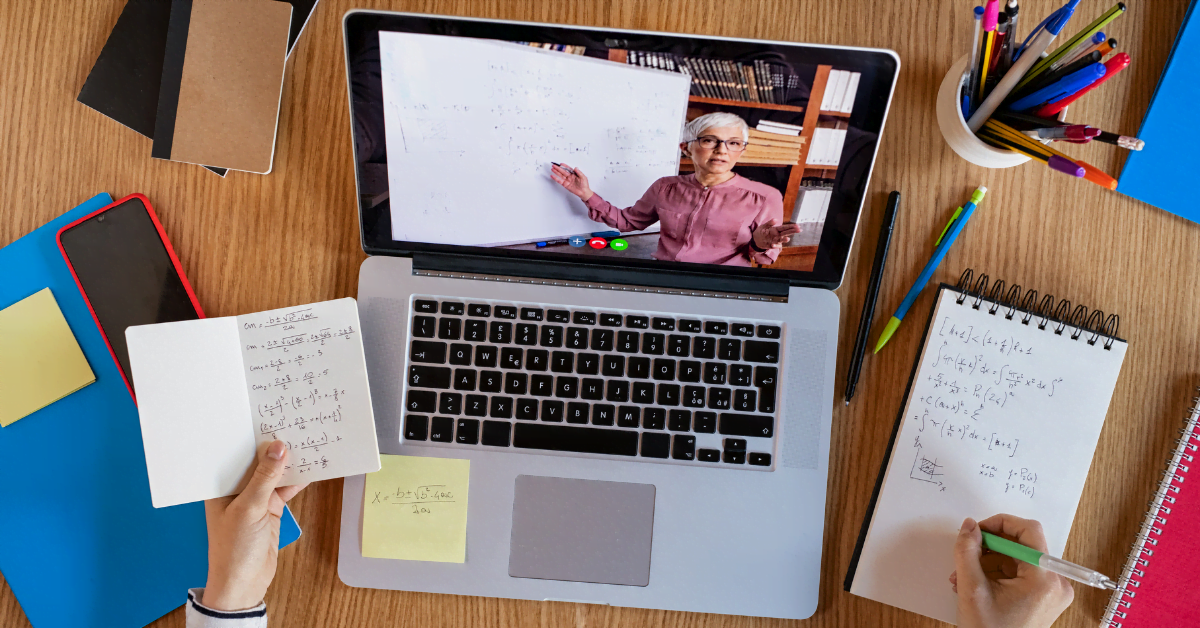The education sector has seen enormous upheaval since the pandemic hit in 2020. However, considering the extent of the impact, schools, colleges and universities have been resilient and adaptable in embracing a new way of working.
Transitioning to a hybrid classroom has not been straightforward for most, but there are many ways that teachers, students and parents can ensure that they are getting the most out of digital learning management platforms to make remote or blended learning success.
How teachers can achieve a successful hybrid classroom
Utilizing your institution’s student information system (SIS) and all the tools it offers is an important way to create a streamlined and engaging hybrid learning environment. These systems allow teachers to schedule through the calendar function, create online teaching sessions for synchronous learning, distribute tasks for asynchronous learning, monitor student progress and more, all through a single platform.
Not only this, if a mobile app version is available, this can be a more accessible way for your students to engage, especially if they’re on the go. Apps allow students to create their own personalized learning environment too, which helps them to be more engaged with learning.
Alongside your institution’s SIS, teachers should make the most of video conferencing platforms during the school day to ensure good student/teacher relationships can still be maintained, whilst also creating a sense of community whilst working remotely. As a result of the pandemic, video conferencing tools have been adapted and enhanced to support remote learning specifically, beyond their original use in a professional environment.
One of the best ways to engage students who are in and out of the classroom is to create an interactive, engaging learning environment. This has always been vital throughout the history of teaching and learning, but is now more vital than ever when students aren’t always physically together. Multimedia content and interactive experiences are easy to set up and deliver when institutions have implemented the right digital tools, and can make a world of difference to students.

How students can learn and engage in and out of the classroom
Carefully managing a daily schedule and maximizing participation goes a long way to ensuring students can get the most out of the hybrid classroom. Many tools are available to students now, whether part of your institution’s SIS or separate, that enable students to maintain structured learning no matter where they are. This is especially important for older students who have free learning time and need to ensure they are maximizing productivity.
Students should ensure they are utilizing all the tools available to them; their institution’s SIS is packed with useful tools and solutions to make learning from home a success. Giving them time to explore the platform to get an understanding of what is there, and how teachers are using the platform is key to ensuring they can engage and participate in the best possible way.
Working in teams remotely can be a source of motivation for students who are feeling too distant from the classroom. During lessons or independent study, having a group of students around you can emulate the feeling of a structured classroom environment. Taking advantage of audience engagement tools can also help to transform the educational process. For teachers, these tools can also provide analytics on how successful the hybrid classroom is for their students and highlight areas for improvement.
How parents can provide an effective hybrid learning environment
Digital learning management platforms provide an opportunity to be more engaged with the hybrid educational process, especially in the K12 age range. The nature of the platform opens up students’ education to their parents, allowing them to take an active role in supporting their work as they learn virtually and in the classroom.
Supporting students in establishing a structured routine will help to bring normalcy and organization. Keeping communication open and the opportunity for parents to check in with how their child is doing with hybrid learning can ensure that any problems are caught and tackled early on. Finally, ensuring that they have a separate place to learn and study at home means that even when they’re remote, students can still have some separation between their school and home lives.
The future of teaching and learning
Digital learning management is a fundamental element of keeping remote education streamlined, engaging and productive. Educational technology is hugely powerful and it is crucial that all participants know how to use these tools effectively so that hybrid learning can be a success.
In the next academic year, we will see many institutions embrace a hybrid approach to learning as they navigate emerging from lockdowns, and restrictions and maintaining health and safety as a priority. The future of education is looking more digital than ever and those ready to embrace new ways to manage learning will provide a fulfilling hybrid classroom environment to help students, teachers and parents thrive.
Note: this article from our CEO Nikolaos Nikou, was originally published in Global EdTech on 24.08.2021
FAQ’s
Students can maximize engagement by managing their schedules effectively, exploring available tools in student management systems, and collaborating with peers remotely. Utilizing multimedia content and interactive experiences enhances learning outcomes.
Parents can support their children by establishing structured routines, maintaining open communication with teachers, and creating dedicated study spaces at home. Involvement in the educational process through digital platforms fosters active engagement and progress monitoring.
Educational institutions can prepare by investing in training for educators, upgrading infrastructure for digital connectivity, and implementing robust student management systems. Embracing technological advancements ensures readiness for future challenges.

